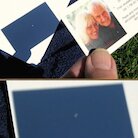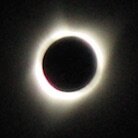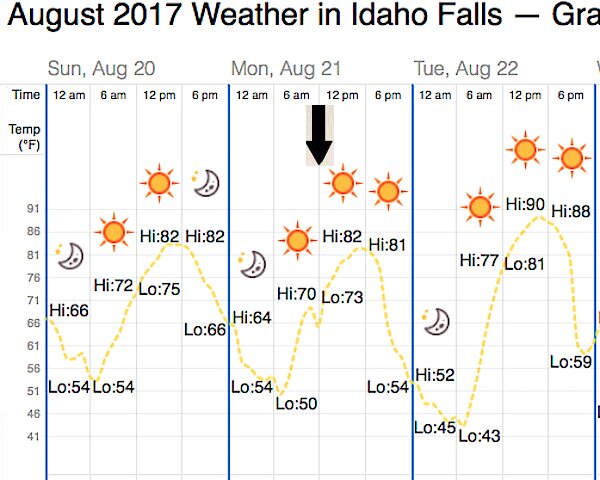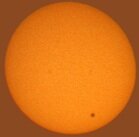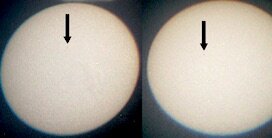|
SOME ASTRONOMY LINKS
For convenience and consistency, these links all (hopefully) open up in a separate window. Please let me know about broken links. Occasionally one or more of the references undergo revision and may have some pages temporarily unavailable.
 |
- The Planetary Society. I joined, and so can you! Check them out on Facebook! Their March, 2018 newsletter includes an article on the Outer Solar System (beyond Neptune) in which 840 Minor Planets have been revealed so far (Pluto having been the first), and a visualization of their relative position in the Solar System is shown in this animation.
- Planetary Landscapes is another fascinating site on Facebook where you can interact daily with the wonders of the universe.
- Planetary Nomenclature. This is the first site that caught my interest when I initially got into the web circa 1995 with the Mosaic browser which rendered their tables perfectly, and the site remains user-friendly. It is refreshing to see a website with such attention to detail.
- Hubble Space Telescope.
- European Southern Observatory (ESO) in Chile.
- United States Naval Observatory.
- National Space Science Data Center.
- StarDate Online.
- Here are some popular astronomical pages on the web that have been suggested to me over the years. I understand that many school science classes have benefitted from this ever-expanding list. THANK YOU! The following are not in any particular order, but do check them out.
- Kerri's virtual classroom benefits from this reference which discusses our closest stars and also those which are the brightest.
- Lisa suggested a wide-ranging guide to assist those becoming interested in astronomy which can be found here.
- James offered this link for The Top 25 Public Observatories.
- Nick and his Boy Scout troop submitted this helpful guide titled "The 88 Constellations and Their Brightest Stars." In case you have been wondering how a particular named constellation could be based on an obscure pattern of stars, this reference illustrates the reasoning.
- The Hub Post Team suggested this page which contains the Top Fifty Astronomy NASA Photos Of All Time as well as a variety of important links.
- Suggested by William is this valuable article which can mean a lot to readers who have begun "stargazing" and need some guidance on what to look for in their naked-eye observations (constellations, planets, meteor showers, etc.) and further with the proper choice of binoculars and telescope.
- Are you presently without binoculars or telescope? Cindy and her Senior Girl Scouts sent along this link to a great guide to naked-eye astronomy.
- Katie and her daughter Peyton recommend this beginner's guide to astronomy which should be very handy for kids.
- Sandra found this informative page while doing astronomy research. Kids, teens and adults will find it of great interest with such features as famous satellites and telescopes, astronomy-related games and activities, and lots more.
- Amy and her students at Kingston Schools suggested this article with space lessons for kids.
- An extensive collection of astronomy prints and posters from artists, photographers and designers around the world can be found at Astronomy Prints at Free Art.
- A jet charter company has put up a great resource – Jets Observing the Skies – which is filled with links concerning many aspects of astronomy. This page is great for kids of all ages (which includes me) and is recommended by the students and their mentor Kelly at Morrow Community Center.
- A Guide to the Galaxy Right from our Bedroom Window was suggested by a school science club in Seattle.
- The W. B. Goodwin Community Center in Springfield, Pennsylvania gives us this link titled "The Hubble Telescope: Shedding Light on the Universe."
- Pedro let me know about this highly educational "Guide to Outer Space Surveillance."
- Click here for an on-line space and science study guide for kids!
- Glassescrafter.com's views of the solar system.
- In their extensive photographic archives, the following online resources offer thousands of astronomy-related images: Astronomy Stock Photography at Go Graph, Barewalls, Fotosearch and CanStockPhoto. One can also use the search features of these websites to check out the maps and other images.
|
Visualizing and understanding descriptions of the various groups of objects associated with our solar system (classified according to size and/or region) can be difficult to keep up with. It is becoming generally agreed that just beyond the eight recognized planets of the solar system lies the Kuiper Belt – home of the large number of Trans-Neptunian Objects (TNOs) with which we are becoming more familiar. Out farther is the more spherical Oort Cloud, probable home of the comets. And you sometimes hear of an intermediate area called the Scattered Disc which contains some far-out TNOs.
What often gets in the way of some real education is concern over the renumbering of planets from nine to eight with the demotion of Pluto to "dwarf planet" status. As mentioned in a following paragraph, it can help to consider those eight planets as two distinctly-different groups of four. And what is coming as a consolation prize is increased knowledge of the Trans-Neptunian Objects in the Kuiper Belt in which Pluto is the crown jewel!
The official definition of "Planet" may still need some work. Having "clearing its neighborhood" as part of a planet's definition seems a specious requirement. Consider that Earth's neighborhood is hardly clear, and who knows the nature of the vast distances between the dwarf planets and other bodies out in the Kuiper Belt? Also recall the ease with which the New Horizons probe sailed through the Pluto system. As an aside, how can we confidently consider the "extrasolar planets" to be just that?
In an article about the New Horizons probe approaching Pluto (published here on March 5, 2015), a sensible classification is being applied to our traditional "nine planets" – namely, terrestrial (Mercury, Venus, Earth and Mars), gas giant (Jupiter, Saturn, Uranus and Neptune) and icy dwarf (Pluto). Perhaps with "rocky dwarfs" like Ceres in mind, the Definition of Planet can simply become this: A self-rounded object which revolves around a star and is capable of having satellites. Then, there can be further classification according to superficial appearance (rocky, gaseous or icy) and region of the solar system.
|
- Comets and Eclipses:
- NASA's Comet and Eclipse sites.
- JPL's Home Pages for Hyakutake and Hale-Bopp. More about comets is here.
- ESO's Home Pages for Hyakutake and Hale-Bopp.
- Check out the Landscape on Comet Tempel 1.
- How far away is that, and how big is it?
- Good questions. Click here for an answer from the RASC Calgary Centre.
- The Scale of the Universe from Astronomy Picture of the Day. After clicking "start," click on the music notes and move the scroll bar.
-
Pluto with its moons Charon (aka Pluto I), Nix (Pluto II), Hydra (Pluto III), Kerberos (Pluto IV) and Styx (Pluto V):
- The highlight of 2015 has been the Flyby of Pluto by the New Horizons Mission whose websites are found here and here and include an abundance of further links. The latter site includes press conferences where the excitement doesn't let up – especially around flyby time.
- The Planetary Society's coverage includes Pluto and Charon-related blogs and press room.
- You can always do a web search using the words Pluto News (without quotation marks) for links to updates and archives.
- Besides Pluto, there are more Trans-Neptunian Objects out in the Kuiper Belt and beyond. These far-out objects seem to have personalities that we are beginning to appreciate, and one can easily do web searches for such items as the following:
- The Pluto-sized Eris (2003 UB313) with its moon Dysnomia. They were formerly nicknamed "Xena" and "Gabrielle."
- New Horizons' next target is 2014 MU69. Check out the story here. Of course, Hubble has a photo of it!
- The rapidly-spinning, football-shaped Haumea (2003 EL61, "Santa") with its moons Hi'iaka ("Rudolf") and Namaka ("Blitzen"). The discovery of a ring around Haumea is detailed here.
- Makemake (2005 FY9, "Easterbunny"). An interesting article about its newly-discovered moon is here.
- The anti-Pluto, Orcus (2004 DW) with its moon Vanth.
- Quaoar (2002 LM60).
- Sedna (2003 VB12).
- Ixion (2001 KX76).
- Varuna (2000 WR106).
- And then there's 2007 OR10 ("Snow White"). Click here for that.
- Asteroid 433 Eros:
- Old View: In the 1931 edition of Compton's Pictured Encyclopedia (Volume 1, page 238) one finds a diagram of the orbit and a hypothetical image of Eros itself.
- New View: The Near Earth Asteroid Rendezvous (NEAR) Project was orbiting the asteroid through most of 2000 and finally landed on it.
- Some more objects:
- Blurring the distinction between comets and asteroids is "C/2014 S3" about which a report (one of many) is found here.
- Asteroids Vesta and Ceres are closely investigated in the ongoing Dawn Mission.
- Asteroids Mathilde and Kleopatra.
- Cruithne: An asteroid that shares Earth's orbit.
- Asteroids with their own moons are listed here and here. Included are Ida, Antiope, and Sylvia (which has 2 moons).
- Hypothetical Planets.
- Some more projects:
- Summary of NASA's current missions including the Cassini-Huygens Mission to Saturn and Titan (also click here) and the amazing Deep Impact Mission (also click here).
- Project Galileo's Journey to Jupiter.


|
![]()
![]()

![]()
![]()









